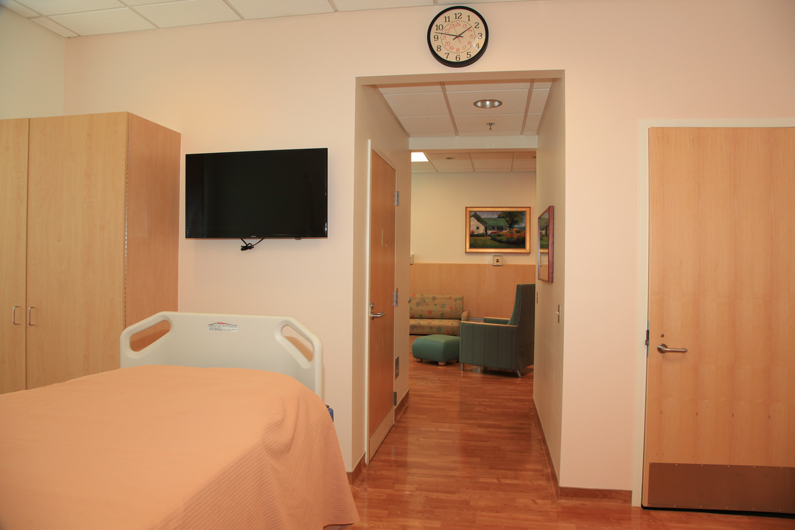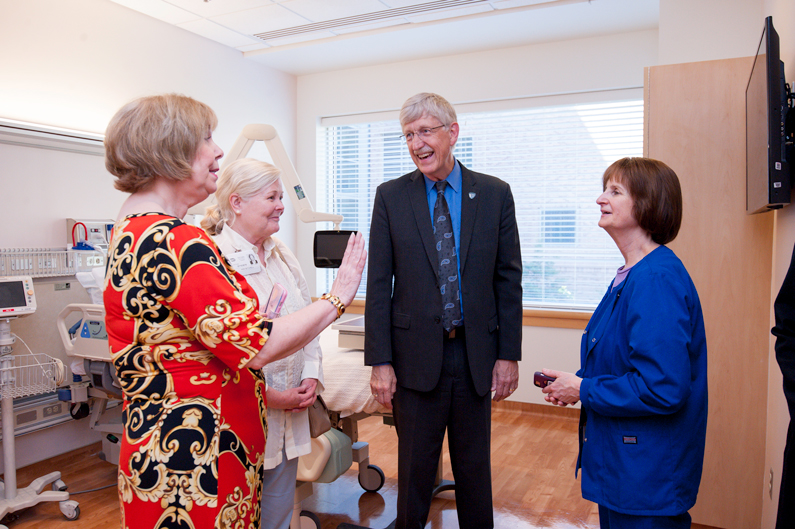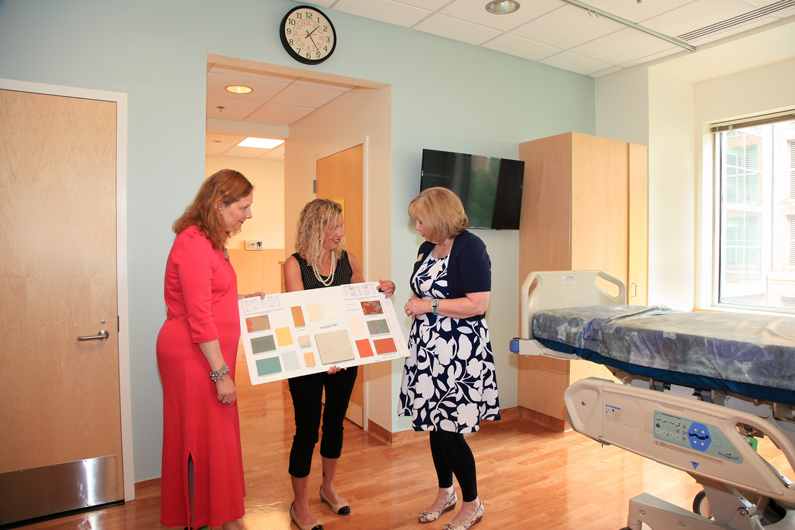New hospice suites provide home-like environment

According to the NIH National Institute on Aging, people who are at the end of life need care in the areas of physical comfort, mental and emotional needs, spiritual issues, and practical tasks. Their families need support as well. In hopes of providing that support to our patients, the NIH Clinical Center opened a Hospice Unit on 3SEN-Medical Oncology July 10.
"Even though this is a hospital, we wanted to make these units seem more like home, where families can spend time together and not feel like they're in a hospital," said Dr. Ann Berger, Chief of the Clinical Center Pain and Palliative Care Service. "We're making sure that nurses are knowledgeable and comfortable working in this setting and that all staff members are more sensitive to the needs of patients and families in the hospice care environment. We know that what happens in this setting will be remembered by families."
The unit is comprised of two rooms that have been converted into a home-like environment where families can stay with the adult patients. Each suite has a bedroom and a community area, including a kitchen and family sitting area. They're decorated differently, each having different color schemes - the furnishings, lighting and even décor were all carefully chosen and arranged so that families members of all ages will feel at home.
At the opening ceremony, NIH Director Dr. Francis Collins said, "There are noble efforts made to try to save lives that don't always result in that happy outcome but yet we promise those individuals that we're not just interested in doing science. We are interested in them. We care about them. We owe it to them, in those circumstances where our efforts are not succeeding, to care for them in a place like this."
Collins praised the multidisciplinary teams who developed the suites: social work, biomedical engineering, administrative management, primary care, spiritual care and many other departments and staff from many of the institutes, particularly the National Cancer Institutes and the National Institute of Allergy and Infectious Diseases. Nursing's leadership also "play a major role," Collins added.
At the opening ceremony, Dr. Gwen Wallen, Chief Nurse Officer of the Clinical Center, said "I visited Montgomery Hospice's Casey House to tour where our nurses were receiving training for end-of-life care, and saw they were designed not only for patients but with communal areas for family use. I have kept in mind the advice of the nursing director at Casey House who said it's more important for the care we provide our patients to be 'high touch' than 'high tech" even though they are still part of a clinical research environment."
Sixteen nurses in the Nursing Department, led by Wallen, have received specialized training to work in the hospice suites. "This is the beginning. We have a lot of work to do together because these really are going to be special places and we're going to have to work as interdisciplinary teams to make it really work the way it's supposed to work," Wallen added.



